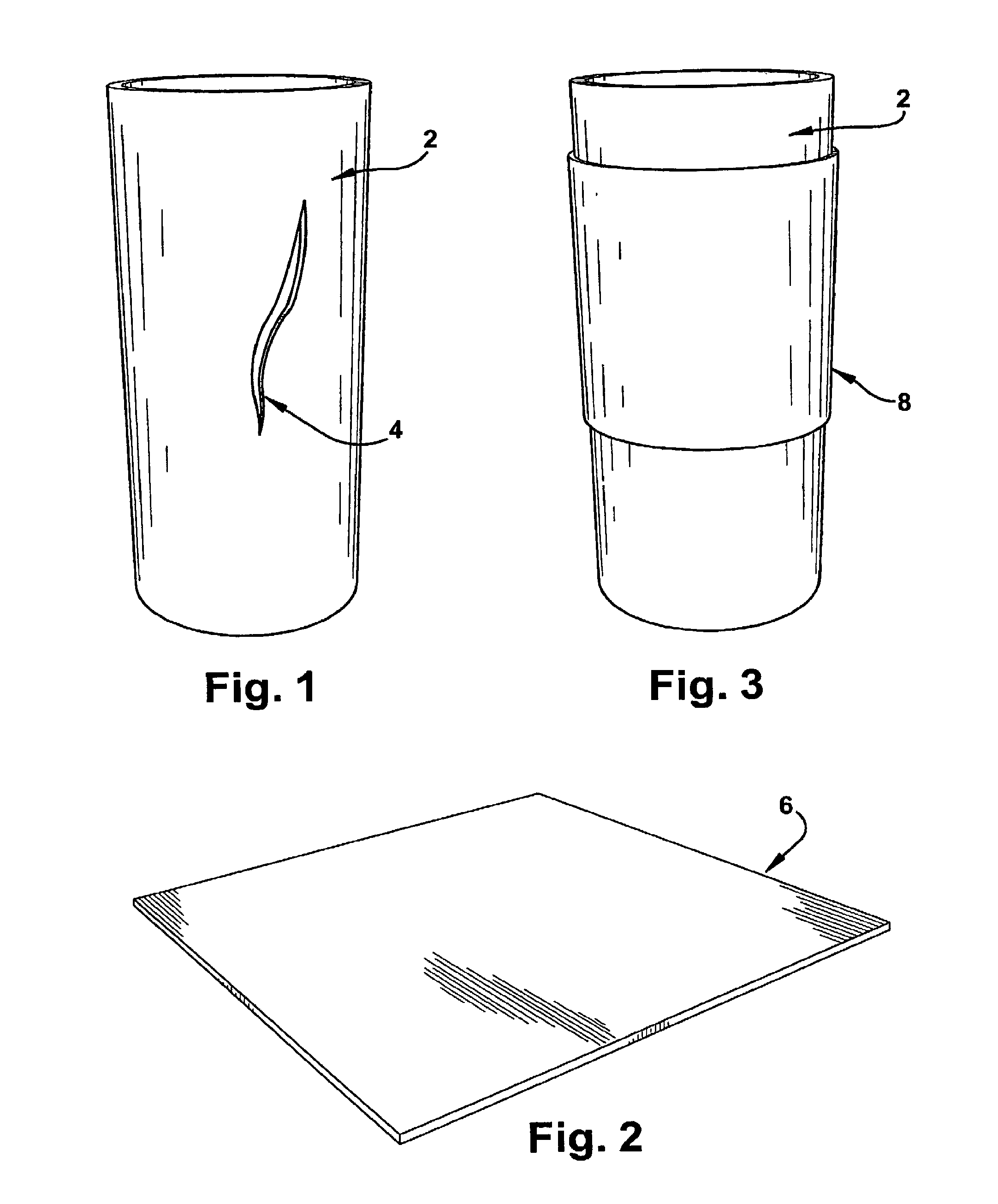Method of making and using shape memory polymer composite patches
a polymer composite patch and shape memory technology, applied in the field of making and using shape memory polymer composite patch, can solve the problems of composite material to become soft again, lose its molded shape, etc., and achieve the effect of reducing the time of composite repair, reducing the time of permanently fixing a damaged part, and affordable pri
- Summary
- Abstract
- Description
- Claims
- Application Information
AI Technical Summary
Benefits of technology
Problems solved by technology
Method used
Image
Examples
example 4
[0118]In order to bond a shape memory polymer composite patch to stainless steel the area around the damaged portion of a part or the area near the portion of the part to be joined to another is scuff sanded and solvent wiped to ensure a clean, smooth bonding surface. Additionally scuff sand and solvent wipe the side of the patch to be bonded to the substrate to ensure a smooth bonding surface. Apply a thin, even layer of Loctite HYSOL U05-FL paste adhesive to repair area on stainless steel. Using the patch from Example 1 heat the patch above its transition temperature. Form patch to repair surface manually or with a heating blanket using vacuum pressure. Cure adhesive according to manufacturers recommendations using temperature controller connected to the heating blanket or other method. Remove vacuum blanket after cure.
[0119]The bonding of the shape memory polymer composite patch can be done to various other substrates, metal cans, car fenders, other composite parts, using the met...
example 1
[0148]As an example, 1.08 g aniline (amine reagent) was mixed with 0.066 g of methylenedianline (crosslinking diamine). The resulting solution was mixed with 4.17 g of bisphenol A diglycidyl ether to form an homogeneous solution. This solution was then injected into a glass mold, made with two, 2″×2″ glass with a Viton O-ring sandwiched in between, by syringe. The resulting material was cured in an oven pre-heated to 125C for 18 hours. This resulted in a clear solid shape memory polymer at room temperature that has a glass transition temperature (Tg) of about 104 C. The resulting material was also tough, as revealed by its resistance to cutting by razor blade hitting with a hammer, and with large elongation above its Tg, and excellent shape recovery. The rubbery modulus of this material was also significantly higher than the styrene-based SMP.
example 2
[0149]For a resin system with a Tg of 103° C., Bisphenol A diglycidyl ether at 78.94% weight is mixed with aniline at 19.88% weight and DETDA (major isomers: 3,5-diethyltoluene-2,4-diamine and 3,5-diethyltoluene-2,6-diamine) at 1.19% weight. All components are miscible liquids and are easily combined through mechanical mixing.
PUM
| Property | Measurement | Unit |
|---|---|---|
| glass transition temperature | aaaaa | aaaaa |
| glass transition temperature | aaaaa | aaaaa |
| glass transition temperature | aaaaa | aaaaa |
Abstract
Description
Claims
Application Information
 Login to View More
Login to View More - R&D
- Intellectual Property
- Life Sciences
- Materials
- Tech Scout
- Unparalleled Data Quality
- Higher Quality Content
- 60% Fewer Hallucinations
Browse by: Latest US Patents, China's latest patents, Technical Efficacy Thesaurus, Application Domain, Technology Topic, Popular Technical Reports.
© 2025 PatSnap. All rights reserved.Legal|Privacy policy|Modern Slavery Act Transparency Statement|Sitemap|About US| Contact US: help@patsnap.com



